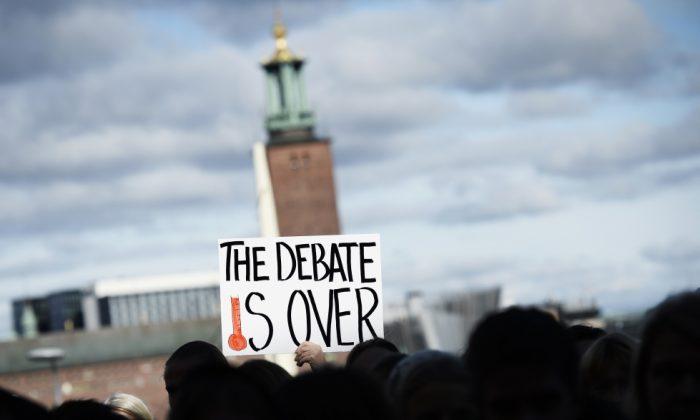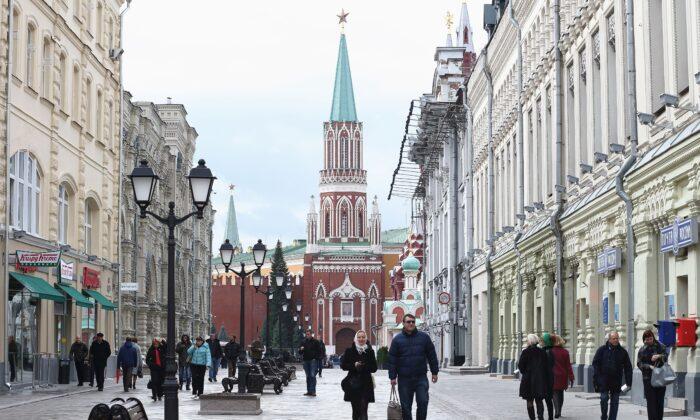Commentary
What are we to make of the “code red for humanity” report just released by the United Nations Intergovernmental Panel on Climate Change (IPCC)?
“The alarm bells are deafening,” pontificates U.N. Secretary-General António Guterres. “This report must sound a death knell for coal and fossil fuels, before they destroy our planet.”
The U.N. report is the most recent in a seemingly endless series of doomsday scenarios suggesting, to quote PJ Media’s
Stephen Kruiser, “that we will all be dead before brunch next Sunday.” Canada’s doyen political commentator
Rex Murphy notes that the IPCC “is fascinated by the end of the world. In fact, the IPCC’s main or only function seems to be predicting it on a regular basis.”
Indeed, given its ongoing relish for reiterating the prospect of imminent planetary apocalypse, we should long ago have disappeared from the ravaged face of the earth. Murphy is quite right to ridicule “the hectoring of the IPCC and its so vast number of scatter brains.”
“Scatter brains” may not be as hyperbolic a term as it may seem. Indeed, when one considers the staple makeup of the IPCC rosters, one may adopt a more sober perspective on its putative competence and, as an added benefit, put its over-the-top scare tactics to rest.
In her 2011 book “
The Delinquent Teenager Who Was Mistaken for the World’s Top Climate Scientist," Donna Laframboise, a former National Post and Toronto Star columnist and past vice president of the Canadian Civil Liberties Association, shows that the “IPCC has been recruiting 20-something graduate students as lead authors, many of whom had not even earned their degrees and some of whom were majoring in non-climate disciplines.” It’s to some degree a farm team roster. Moreover, almost a third of the 2007 IPCC report (or Climate Bible), for example, consisted of so-called “gray references,” that is, unaccredited studies, non-peer-reviewed material, newspaper items, press releases, magazine articles, unpublished graduate theses, and green activist sources.
As Laframboise writes in a subsequent volume “
Into the Dustbin,” which is rich with accompanying evidence, “the climate world isn’t a normal one. Indeed, it resembles the Wild West. Poorly socialized adolescents swagger and bluster, grownups are in short supply, and the sheriffs turn out to be as lawless as everyone else.”
Laframboise discusses how the previous IPCC Chairman Rajendra Pachauri, who operated his own nonprofit organization The Energy and Resources Institute (TERI), was accused of a conflict of interest. He was also the chief backer of the great “Himalaya melt” scare, which was shown to be based on mere undocumented, unchecked, and
unproven “speculation.” It all makes for dispiriting reading and redoubled skepticism.
Of course, no one is suggesting that humans haven’t had a detrimental effect on the earth’s ecosystems. But this isn’t tantamount to an around-the-corner ecological implosion and certainly not to a latter-day, man-made climatic barbecue. There’s clearly a popular fascination with the prospect of imminent human extinction, that is, with “last things,” an obsession with cultic overtones generally signifying a hunger for transcendent meaning, spiritual nourishment, and ultimate guidance that goes otherwise unsatisfied.
As Murphy writes, the IPCC has “the same summoning power today as the Roman papacy at the peak of its influence. Curiously, like the papacy, it also claims infallibility.” It commands a powerful incentive to compliance. We now live in a profane and materialist world in which traditional religious practices and beliefs have come under fire. Politics, cultural fads, and ideological convictions have become all-consuming. As a result, filling a spiritual void, climate-change advocates have tended to become a quasi-liturgical sect.
Carbon taxes now resemble a traffic in indulgences, as energy sinners buy absolution from a secular clergy. Computer models have become the sacred texts of this new breed of true believers who, despite the contradictions and disparities found therein, insist on toeing the orthodox line. The multi-chapter IPCC report is our “Book of Revelations.” The U.N. secretary-general is our Pontifex Maximus.
As
Irving Kristol has written, “All people, everywhere, at all times, are ‘theotropic’ beings, who cannot long abide the absence of a transcendental dimension to their lives.” But too many of us tend to divert our spiritual needs from the numinous to the meretricious.
As often as not, the constructs that emerge in the theoretical simulated world don’t qualify as proof of what happens in the real world, especially when the scribes, as Laframboise reveals, are plying their version of
pseudepigraphia. But this hasn’t prevented the climate models from becoming the Authorized Version.
Views expressed in this article are opinions of the author and do not necessarily reflect the views of The Epoch Times.





Friends Read Free